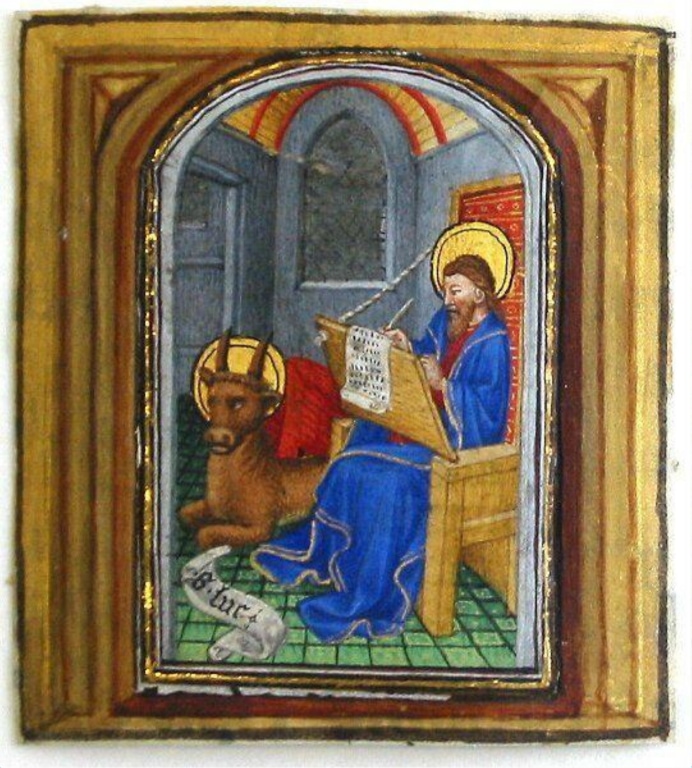Manuscript Cutting: Miniature from a Book of Hours showing Saint Luke

Unknown Artist
Miniature from a Book of Hours showing Saint Luke
Paris, 1420s
Ink, pigments and gold on parchment, 47 x 44 mm
Victoria and Albert Museum (No. 9019A/1)
Saint Luke the Evangelist was one of the four gospel authors and is represented in visual culture as, or with, an ox, his symbol. Here, he is shown seated, writing with a quill and dressed in an opulent blue robe.
It is common for Luke to be depicted physically writing his gospel where he recounts the life, ministry, death, resurrection, and ascension of Jesus. Equally, the ox is a sacrificial animal that represents slaughter as an act of devotion. The work is composed in two parts glued together and you can see this addition on the reverse of the leaf. It is likely that the fictive (painted) frame was added later, cut from another manuscript of similar date.
In medieval art, Saint Luke is often shown as a devout scholar in a robe, holding a pen and scroll, with an ox, as painted in this illumination. In Christian tradition, the ox represents Saint Luke’s devotion and symbolises sacrifice, which is a theme reiterated in his gospel. The reverse side of the cutting features verses from the Gospel of Saint Luke, indicating its origin in a Book of Hours, a devotional prayer book used by medieval Catholics for private prayer and liturgy.

The reverse also reveals that the cutting is physically composed of two parts, with the painted frame portion added later, likely to give the image a more substantial and squarer appearance, possibly to fit into a small locket or frame.